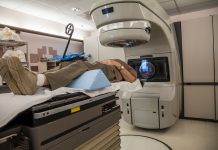Dr Zisis Kozlakidis & Eduardo Mascarenhas turn the spotlight on Artificial Intelligence implementation and cancer research
The technological developments of the recent decades have heralded computer-driven approaches in the development of laboratory-based cancer research, clinical practice, and research infrastructures such as biobanking and artificial intelligence implementation while supporting the ongoing processes of automation and innovation. The notion of implementing computer-based approaches in healthcare, handling and analysing clinical tests and records is not a new one.
It was discussed since the advent of computerised systems in the 1960s concurrently with some of the very first implementations within a healthcare environment.
However, those discussions were carried through with little conviction (other than for administrative purposes) until the dawn of the 21st century. Flagship international projects, such as the Human Genome Project, the UK Biobank, the Cancer Moonshot program and others, acted as the catalyst in transforming our understanding and expectations of computer-driven approaches in healthcare translational research and were followed by considerable investment to allow for such approaches to emerge.
The broader digital transformation in healthcare
The digital transformation in healthcare must be contextualised as a mix of technologies that work together as part of a puzzle: the Internet of Things, blockchain and Artificial Intelligence (AI). Previously, healthcare data was collected and structured manually, mostly centralised, which would mean a cumbersome, error and faulty-prone environment. The introduction of connected devices embedded with sensors and light weight-software became a game changer in the data collection process. However, a major challenge was to guarantee data integrity (and sometimes anonymity), while still maintaining auditability and trackability. Data Science, a comprehensive umbrella of statistical and design techniques as well as development methods is used for classifying data, extracting relevant information, cleansing data and developing algorithms for pattern and data correlation. AI is built on the top of Data Science.z
One name, many definitions
Within healthcare research, AI is an often-used term, which remains both a vague and evocative expression to characterise the capabilities of machines (i.e., algorithms) to classify or stratify clinical cases or predict related conditions with high accuracy – in some cases, even more accurately than human experts, and potentially reducing bias and human errors. (1) The multiplicity of definitions to some extent has been an inevitable consequence of the different technologies that have introduced novel high-tech capacities and capabilities to existing approaches or added entirely new ones. However, at the same time using a single term belies the point that AI is a uniform field. There are many different applications of AI in healthcare, and one would need to appreciate them as distinct and often unconnected events. For example, in healthcare, AI is normally used as a Clinical Decision Support (CDS) software (2), which is intended to provide information on the diagnosis, treatment, prevention, cure or mitigation of a disease or some specific patient condition. The final decision relies on the expertise of a specialised medical team. However, despite support in the decision-making process through an intelligent component, there are many other factors, apart from intelligence, which are essential in making a clinical diagnosis. A great clinician is not the one who knows better (more data), but rather the one who uses the knowledge (interpret data) and applies their clinical acumen, experience and wisdom based on the context to make a diagnosis. Importantly, for an experienced clinician, gut feeling is data too.
The AI revolution is underway: sometimes silently
Healthcare is evolving rapidly and there are major areas where AI creates a silent revolution, for example, in imaging, where AI can substantially streamline radiologists’ work while improving the detection of breast cancer. (3) From a long-term economic perspective, AI will drive down the costs of high-volume, repetitive tasks in healthcare and, therefore, it is anticipated to have a major impact on healthcare economics. Additionally, as artificial intelligence implementation may also improve the early diagnosis of diseases, treatment will be simpler, less invasive and with increased success rates. However, AI algorithms rely on long-term knowledge (disease-specific datasets) that create a clear understanding of the disease and minimise the risk of mistaken decisions – as such the impact of implementation is likely to be felt long-term. Lastly, there also exists some ethical aspects of using AI in the sensitive area of medicine: wrong decisions could be understood as an omission by the treating clinicians. This could lead to questions, such as: who is responsible if AI fails? Was it a mistake of the designer of the AI system? Was it a deployment mistake or a mistake of the AI end-user?
Cancer research opportunities and AI
Specifically in cancer research, several initiatives over the last decade have resulted in the generation of large cancer datasets. These datasets are obtained from the detailed profiling of well-characterised tumour samples, using high-throughput platforms and technologies. The Cancer Genome Atlas (TCGA) is by far the most comprehensive, publicly available compilation of tumour profiles, including data types such as imaging, genomics, epigenomics, proteomics and histopathology. (4) Such detailed, publicly available information is used as the foundational resource to build predictive models and present the opportunity to integrate locally sourced research information with highly-referenced datasets. Many studies have shown the benefits of such integration, for example, training predictive AI-driven models on multiple integrated rather than singular data sources, has been shown to predict the targets and mechanisms of action of small anticancer molecules and improve overall prediction accuracy. Thus, there is reserved optimism that AI-driven research will result in improvements in cancer detection, staging and grading; drug efficacy and synergy; eventually resulting in a significant potential impact on patients’ outcomes.
Cancer research, AI and LMICs
However, there are also challenges present in the implementation of AI in cancer research, which go beyond the immediate technical requirements of different research approaches. Specifically, as AI relies on high-quality data and large volumes thereof – it becomes clear that this might be a limiting entry point for low-and middle-income countries (LMICs), where high-quality data might not be available in large volumes or in some cases not available at all. Additionally, the affordability of required computational infrastructure and processing power might also prove challenging, as well as the availability of appropriately trained staff that would need to implement and operate such applications. Thus, the approach that AI-driven healthcare might take in LMICs might be distinctly different to those already tested in high-income settings, perhaps less uniform and more context-driven, so that it can be successfully adopted.
Conclusively, innovation is an essential ingredient for the growth and development of any organisation or an industry. Artificial intelligence implementation presents one such great innovation in the field of medicine and medical research, with high promise for advancing cancer research and eventually cancer care. However, in a fast-moving world that might require substantial steps from analogue to digital and AI, perhaps the latter needs to be context-specific (or region-specific) in its implementation to be successfully adopted in the longer term.
Disclaimer
Where authors are identified as personnel of the International Agency for Research on Cancer/WHO, the authors alone are responsible for the views expressed in this article and they do not necessarily represent the decisions, policy or views of the International Agency for Research on Cancer/WHO.
References
1. Cabitza F, Campagner A, and Balsano C. “Bridging the “last mile” gap between AI implementation and operation: “data awareness” that matters.” Annals of translational medicine 8.7 (2020).
2. Food and Drug Administration (FDA), “Clinical Decision Support Software”, (2019) https://www.fda.gov/regulatory-information/search-fda-guidance-documents/clinical-decision-support-software
3. Leibig C et al. “Combining the strengths of radiologists and AI for breast cancer screening: a retrospective analysis.” The Lancet Digital Health, Volume 4, Issue 7, (2022): 507-519, https://doi.org/10.1016/ S2589-7500(22)00070-X
4. National Cancer Institute (NCI), National Institutes of Health (NIH), USA. https://www.cancer.gov/about-nci/organization/ccg/research/structural-genomics/tcga
Contributor Profile
Contributor Profile
Editor's Recommended Articles
-
Must Read >> New technologies for knowledge translation in cancer

















